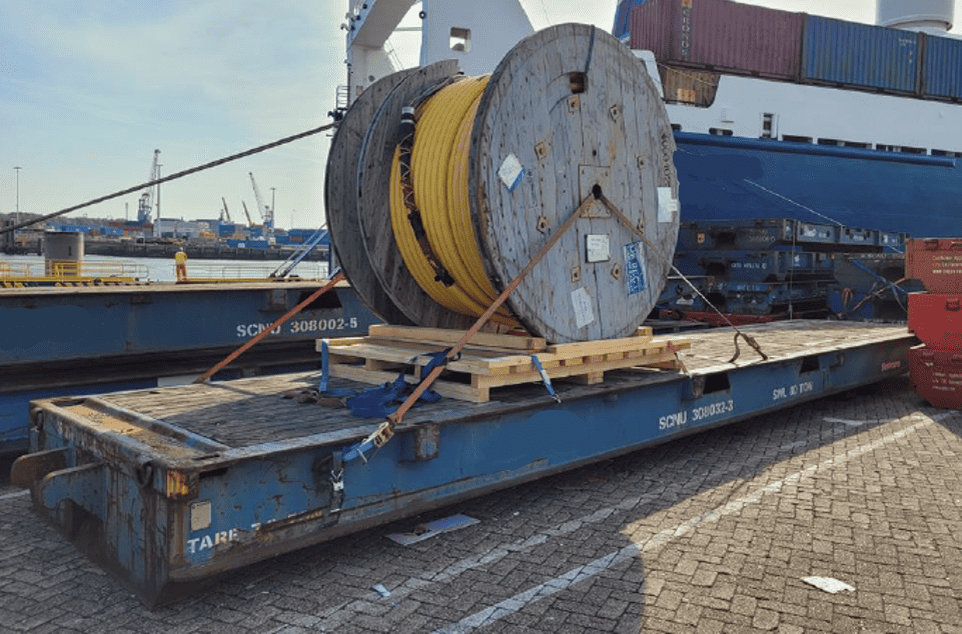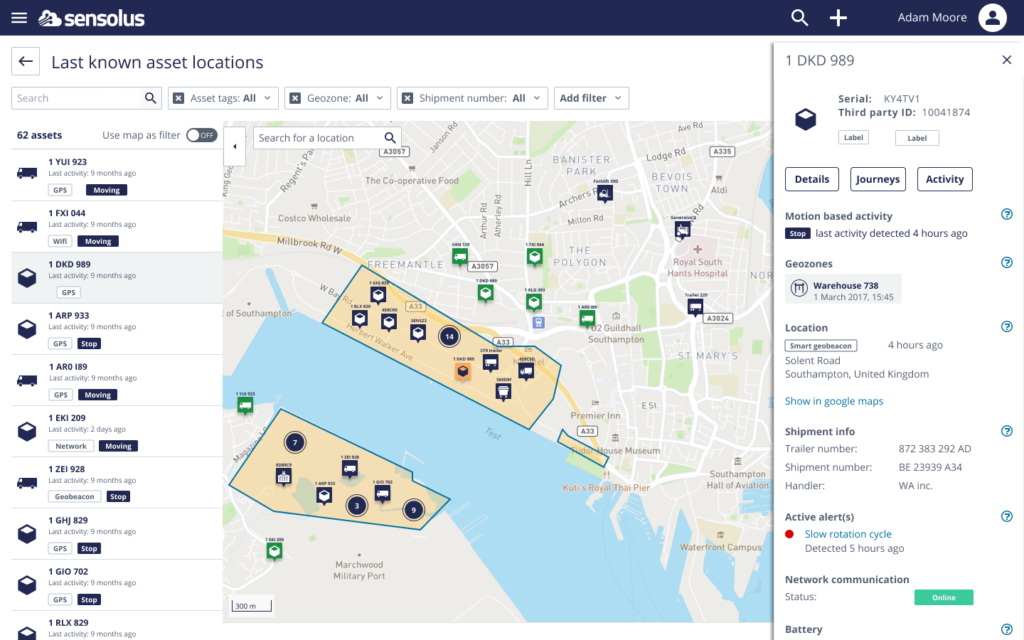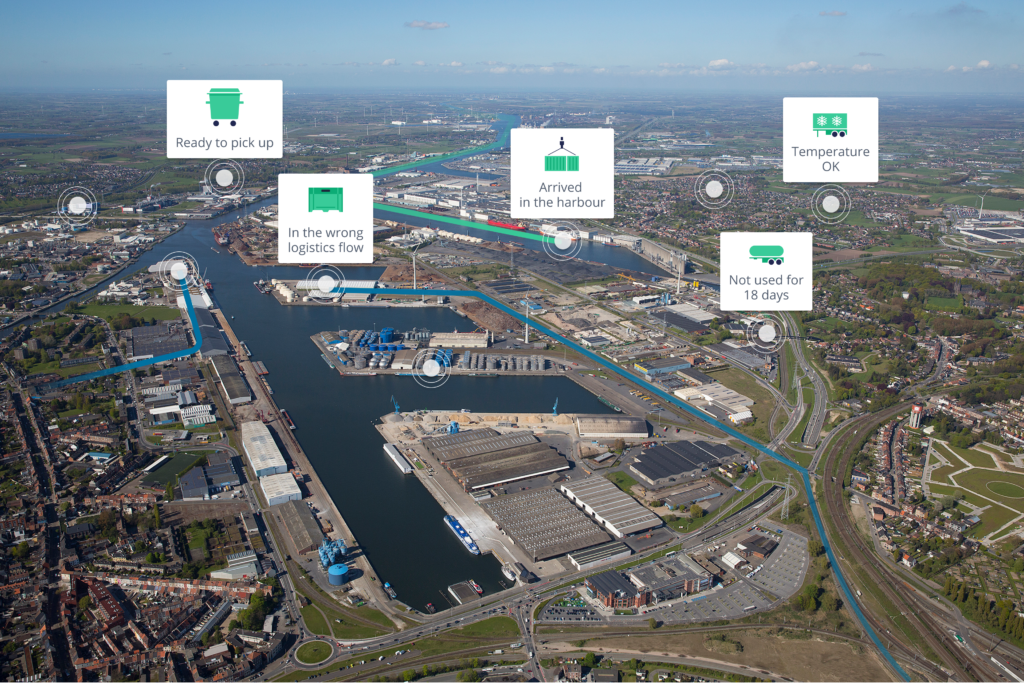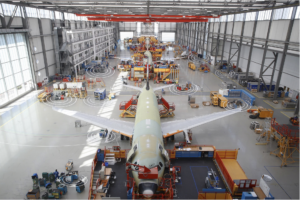Ports play an important role in supply chains as they connect global supply chain routes with regional production and consumption markets. They are important transportation hubs that facilitate the distribution of freight (including raw materials, parts and finished consumer products) to businesses in local communities and worldwide markets.
In this capacity, cargo is often transferred from one mode of transport to another. For example, containers unloaded from ships can be transferred to trucks or trains for further distribution. They often have extensive logistics and distribution facilities, including warehouses, storage yards and container terminals. This includes critical infrastructure like berths, cranes and container handling equipment to handle these large volumes of cargo.
They also offer a range of services such as customs clearance, freight forwarding and cargo tracking, which are essential for international trade. An example is the port of Antwerp-Bruges in Flanders, Belgium. They recently announced Gateway²Britain a digital application that will bring visibility and transparency for trading with Flanders into one place. Their aim is to make trade between Flanders and Britain as frictionless as possible.
Annick De Ridder, President of the board of directors of Port of Antwerp-Bruges, emphasizes their commitment:
“Port of Antwerp-Bruges has a long tradition of facilitating the supply chain and is fully committed to digitalization. (…) As a major export port to the UK, we also see this as an important opportunity for our own competitiveness, Flemish logistics and, by extension, a reinforcement of the economic engine we are for Flanders.”
An important stakeholder in this application are supply chain & logistics partners, such as intermodal transport companies.
The role of intermodal transport companies
Intermodal transport companies play a significant role in leveraging the importance of ports in the international supply chain. These companies specialize in coordinating and integrating various modes of transport, such as sea, road and rail, to ensure seamless movement of cargo. They often cope with complex bureaucracy related to international trade, next to managing a tremendous amount of expensive assets related to intermodal transport.

These assets are used to facilitate the switch across different modes of transportation. Some examples are containers, chassis, cassettes, trailers and trucks. They move around the harbor and transport cargo on and off ships. However, owners struggle to keep track of them since they often use processes that rely on manual input and coordination between different departments and subcontractors. If the assets are sitting idle in the harbor or worse, are dropped off at the wrong location, it results in costs that could be avoided.
The benefits of a tracking system
At a glance
- Full visibility of the assets and logistical flows
- Automated inventory management
- Increased asset utilization
- Risk mitigation
- Digitized administrative processes
The solution is to track these physical assets and create a digital twin, for which the data can be analyzed in the cloud. When an autonomous tracker is installed on cassettes for example, the fleet manager can log into a platform and see all the data that is being gathered for the cassettes. They have an overview of how many cassettes are available in each port, how often they are in use, where they are travelling to etc.

The automatic inventory allows them to plan their resources optimally and removes the need for manual counting or hunting down lost assets. What’s even more, they can ensure business continuity by setting notifications when the number of available cassettes drops below a certain threshold. This buys them time to arrange for additional cassettes when they expect new shipments coming in, preventing unnecessary delays.
Visibility of movement between sites of interest
Another benefit of knowing where assets are and defining which zones they are expected to be in, is avoiding additional costs when a container has been dropped off at the wrong location. Ports charge the transport companies for storing containers within their borders. If a container gets lost because it was unloaded at the wrong site and no one is aware of it, it can result in an unexpected invoice of thousands of euros. The asset management system can send a notification to alert the owner when a container is not where it is supposed to be, allowing them to pick it up and avoid additional costs.
Cost savings on inventory and increased utilization of existing assets
Asset tracking also helps to reduce costs in another way: when the transport company has no way of knowing where their assets are, risk-averse behavior of planners often results in excessive numbers of “spare” assets like chassis and cassettes being kept in each harbor – to ensure business continuity when shipments come in.
When the assets are outfitted with a tracker, they can adequately allocate their resources and assign redundant assets to other locations. This ultimately results in increased utilization of these assets.
Our customers report that after deploying our asset tracking solution, they were able to reduce their fleet with 10% while maintaining or even increasing their level of operations.
Mitigating risk like theft and damage
Moreover, tracking the assets enhances security and helps mitigate risks such as theft, loss or damage. If an asset deviates from its intended route or experiences an unexpected delay, companies can quickly identify and respond to the situation, minimizing potential disruptions and improving customer satisfaction.
Digitized administration processes
Next to these operational improvements, the access to digital logs and relevant business data can help ease the administrative complexity of international trade and support compliance. In this context, Sensolus is involved in the Gateway²Britain project mentioned earlier, demonstrating how internet of things facilitates digitization of supply chains and eases friction caused by disruptions such as Brexit.
In summary, digital tracking of assets is relevant for intermodal transport companies as it enhances operational efficiency, improves asset management, ensures security, boosts customer satisfaction, and enables data-driven decision-making. It plays a vital role in optimizing intermodal operations and delivering efficient and reliable transportation services.



